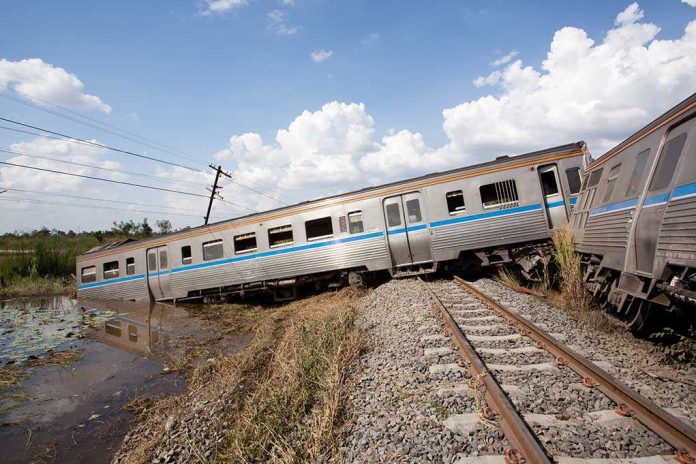
In the age of technology, the vulnerability of American trains to remote hacking is not just a theoretical risk—it’s a reality waiting to be exploited.
At a Glance
- A 1980s protocol, meant for safety, now leaves trains open to hacker attacks.
- Cybersecurity experts have been raising alarms since 2012 without much action.
- Incidents abroad show the real-world feasibility of these attacks.
- Efforts to address the vulnerabilities might take until 2027 or beyond.
The Origins of a Vulnerability
Back in the 1980s, the End-of-Train (EOT) and Head-of-Train (HOT) remote linking protocol was the high-tech answer to rail safety. This protocol allowed communication between the train’s head and tail using radio frequencies. It was a time when neon leg warmers were cool, and cybersecurity was as futuristic as flying cars. Fast forward to today, and these protocols have become the Achilles’ heel of American trains.
The glaring issue? These systems were designed without considering cybersecurity threats. Weak authentication mechanisms meant to facilitate seamless communication now serve as an open invitation to hackers. Neil Smith, an independent researcher, first discovered this vulnerability in 2012. His warnings were dismissed, with the Association of American Railroads labeling the devices as “end of life,” despite their continued use.
International Incidents and Wake-Up Calls
While the U.S. rail industry hit the snooze button on these warnings, hackers abroad were wide awake. In Ukraine and Poland, cybercriminals used inexpensive radio devices to wreak havoc on rail operations. These international incidents serve as a chilling prelude to what could happen in the U.S. if action isn’t taken swiftly.
The vulnerability caught the spotlight again at the DEF CON hacker conference in 2018. Eric Reuter, another intrepid researcher, publicly discussed the flaw, drawing more attention to the issue. By 2024, the Cybersecurity and Infrastructure Security Agency (CISA) finally began engaging with the problem, culminating in a public advisory in July 2025.
Current Efforts and Long Road Ahead
July 2025 brought a critical advisory from CISA, warning of the vulnerability in EOT/HOT protocols. The advisory confirmed that hackers could remotely activate train brakes using weakly authenticated radio commands. This revelation sent ripples through the industry, but the solution is not a quick fix. The Association of American Railroads is scrambling to develop more secure systems, yet full deployment isn’t expected until 2027 at the earliest.
In the meantime, CISA is working with industry partners to devise interim mitigation strategies. These include intrusion detection and monitoring for unauthorized radio signals. However, the TSA’s cybersecurity regulations for rail, introduced in 2022, are still considered less robust compared to those in other critical sectors.
The Broader Implications
In the short term, the risk is palpable. Train stoppages, derailments, or accidents loom as potential outcomes if the vulnerability is exploited. The public faces increased danger, and rail operators could find themselves knee-deep in legal and reputational quagmires. Long-term, a massive infrastructure overhaul is inevitable. The industry might face tighter cybersecurity standards, and the vulnerability sheds light on the broader challenge of securing legacy systems across critical infrastructure sectors.
The vulnerability of American trains to remote hacking is not just a technical glitch—it’s a wake-up call. It underscores the urgent need for a cultural shift in how cybersecurity is approached, not just in rail, but across all sectors relying on legacy systems. The clock is ticking, and the stakes are high. The industry’s response will determine not just the safety of trains, but the security of critical infrastructure nationwide.
Sources:
New York Personal Injury Attorneys Blog







